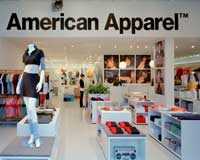"Who knew the Trump government would change the fate of people who are wanting to set up base in Vietnam on the grounds of low labour cost and increasing sourcing activities. Steve DiBlasi, VP-global sourcing, Lanier Clothes shifted a fair amount of his company’s apparel production from China to Vietnam around six years back to take early mover advantage of benefits associated with TPP which the then Obama administration proposed. The free-trade agreement, which could have given duty-free access to apparel imported into the United States from Vietnam, became null and void post Trump Presidency."

Who knew the Trump government would change the fate of people who are wanting to set up base in Vietnam on the grounds of low labour cost and increasing sourcing activities. Steve DiBlasi, VP-global sourcing, Lanier Clothes shifted a fair amount of his company’s apparel production from China to Vietnam around six years back to take early mover advantage of benefits associated with TPP which the then Obama administration proposed. The free-trade agreement, which could have given duty-free access to apparel imported into the United States from Vietnam, became null and void post Trump Presidency. Vietnam is still the No. 2 exporter of apparel into the United States but for sourcing managers, it’s no longer an interesting proposition. DiBlasi pointed out this at a seminar ‘Vietnam Continues to Lure US Firms’ during the recent Sourcing at MAGIC show at Las Vegas Convention Center.
Facts reveal an interesting picture

The moderator of the seminar was Julie Hughes, President, US Fashion Industry Association, a Washington-DC, organization that works to break down barriers to importing apparel and textiles into the United States. The Association had commissioned a study on sourcing in Vietnam, conducted by Sheng Lu, Assistant Professor of fashion and apparel studies at the University of Delaware. The study, surveyed 34 executives of large fashion companies with more than 1,000 employees, and revealed this year only 36.7 per cent of executives expected to expand their sourcing in Vietnam compared to 65.4 per cent last year.
The study revealed next year, the minimum wage in Vietnam, which is still relatively low, is scheduled to increase 6.5 per cent. Currently the minimum wage ranges from $114 to $165 a month, depending on the region within the country. China’s minimum wage is around $350 to $400 a month. For these sourcing executives, China is still the No. 1 go-to place to make clothing. Lu remarked it is not about the price rather it is about capacity and it is about speed-to-market that is keeping China relevant to the fashion world. There is ease in doing business in China, and it is investing in technology. The executives who participated in the survey said 30 to 50 per cent of their sourcing is done in China while 11 to 30 per cent is done in Vietnam. Of the 106 categories of apparel products, China was the top supplier in 88 categories and Vietnam was No. 1 in five categories.
Vietnam’s growing sourcing strength
So why is Vietnam been increasingly becoming manufacturers’ paradise? DiBlasi says, it has been relatively easy to get goods in and out of the country through the various ports located in Hai Phong in the north, Saigon in the south and Da Nang in the central region. It is also easy to find factories through various agents that work in the country. Avedis Seferian, President and Chief Executive, WRAP (Worldwide Responsible Accredited Production), a nonprofit that inspects apparel factories around the world to certify they are treating their employees fairly, are socially responsible and have a safe working environment, noted Vietnam has been taking social compliance in their factories very seriously. They recognise that today’s market is far more transparent than before and you are far more at risk of bad news spreading, particularly with social media. DiBlasi pointed out, Vietnam has a pro-business culture, is good on compliance, is working to protect its environment and is moving apparel factories to rural areas to reduce costs.
Raw materials are still imported from China as there is a lack of mills and dyeing houses, and Vietnam’s minimum wage is rising every year over the next decade. In addition, there is no free-trade agreement with the US, but there is one between Vietnam and Europe, which goes into effect next year. This would typically mean more European apparel manufacturers, which pay more than US manufacturers, will be heading to Vietnam to make their clothes.












